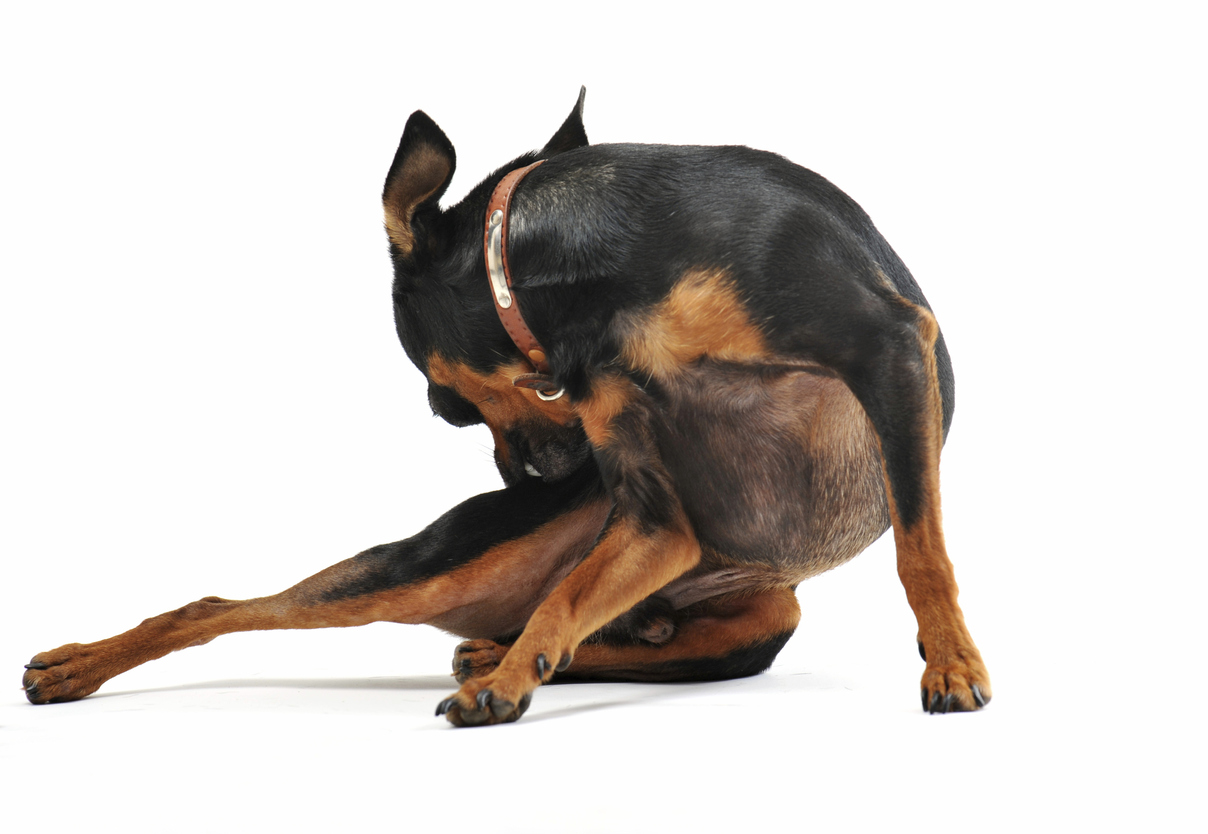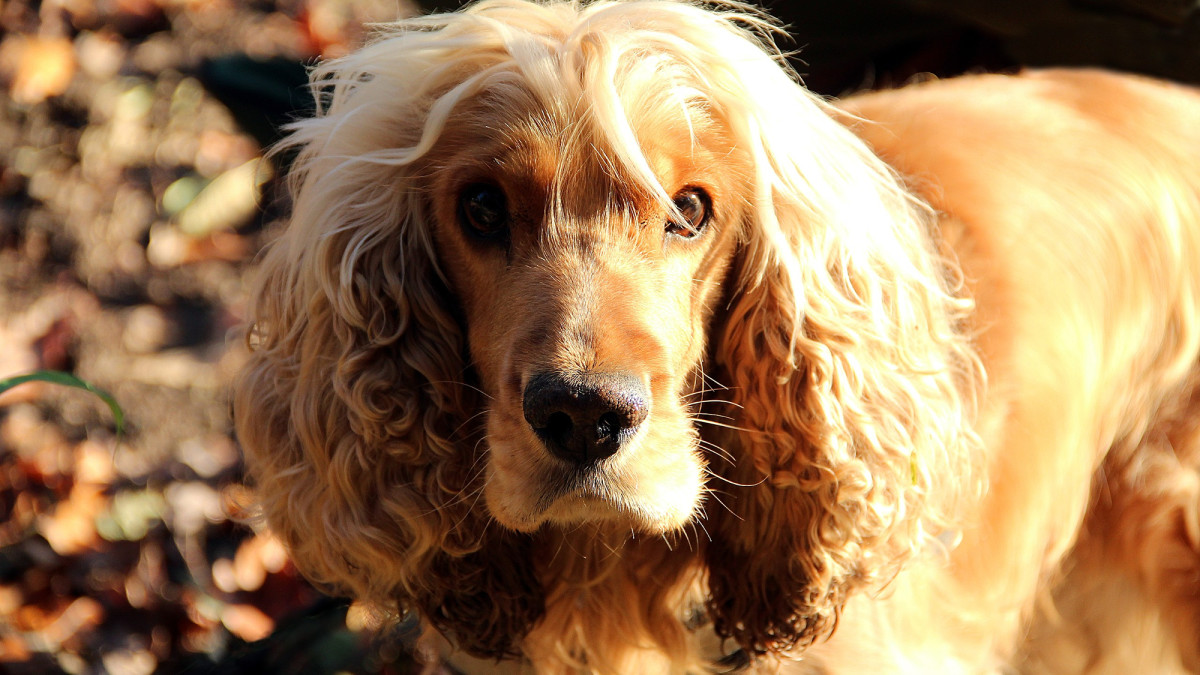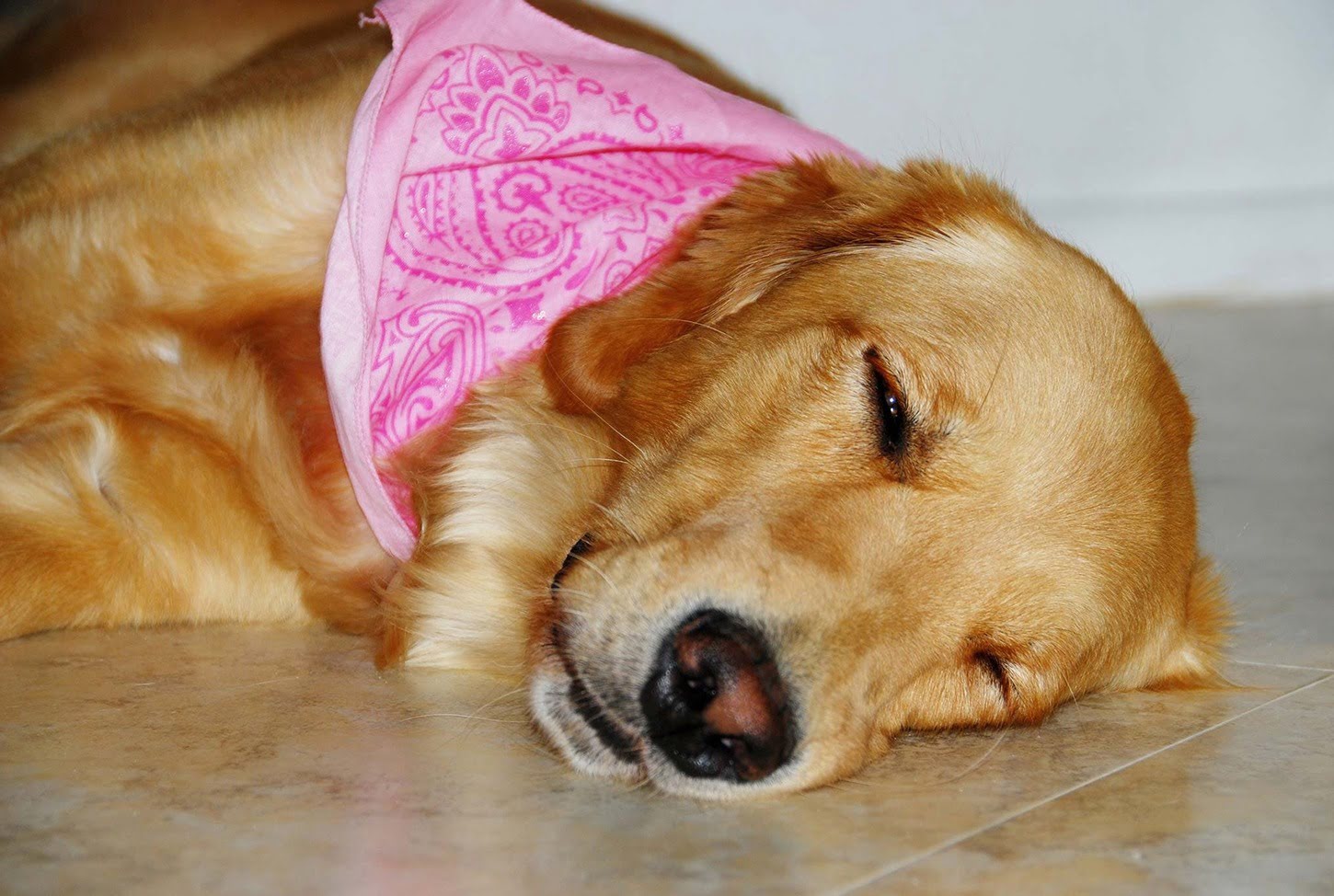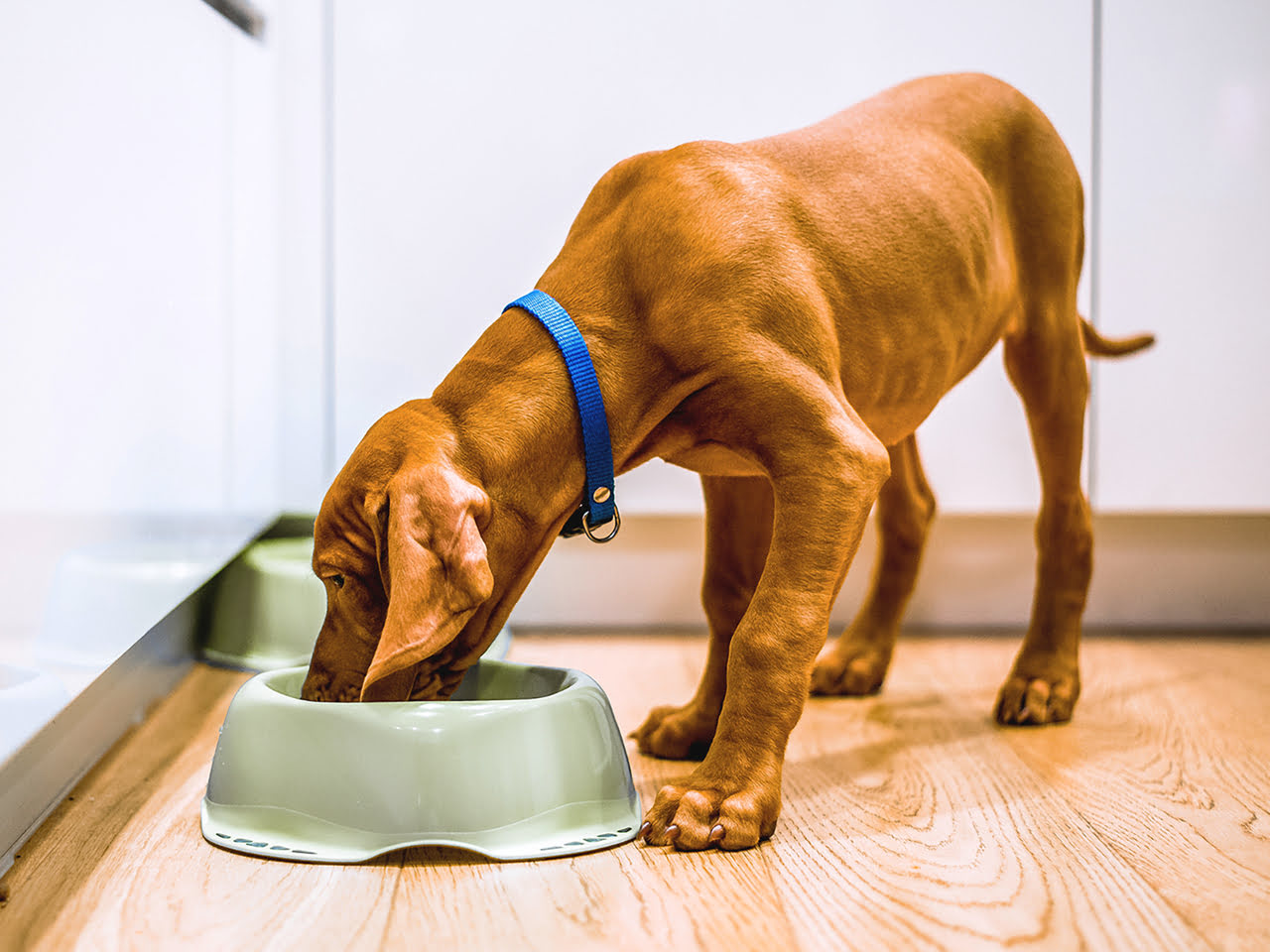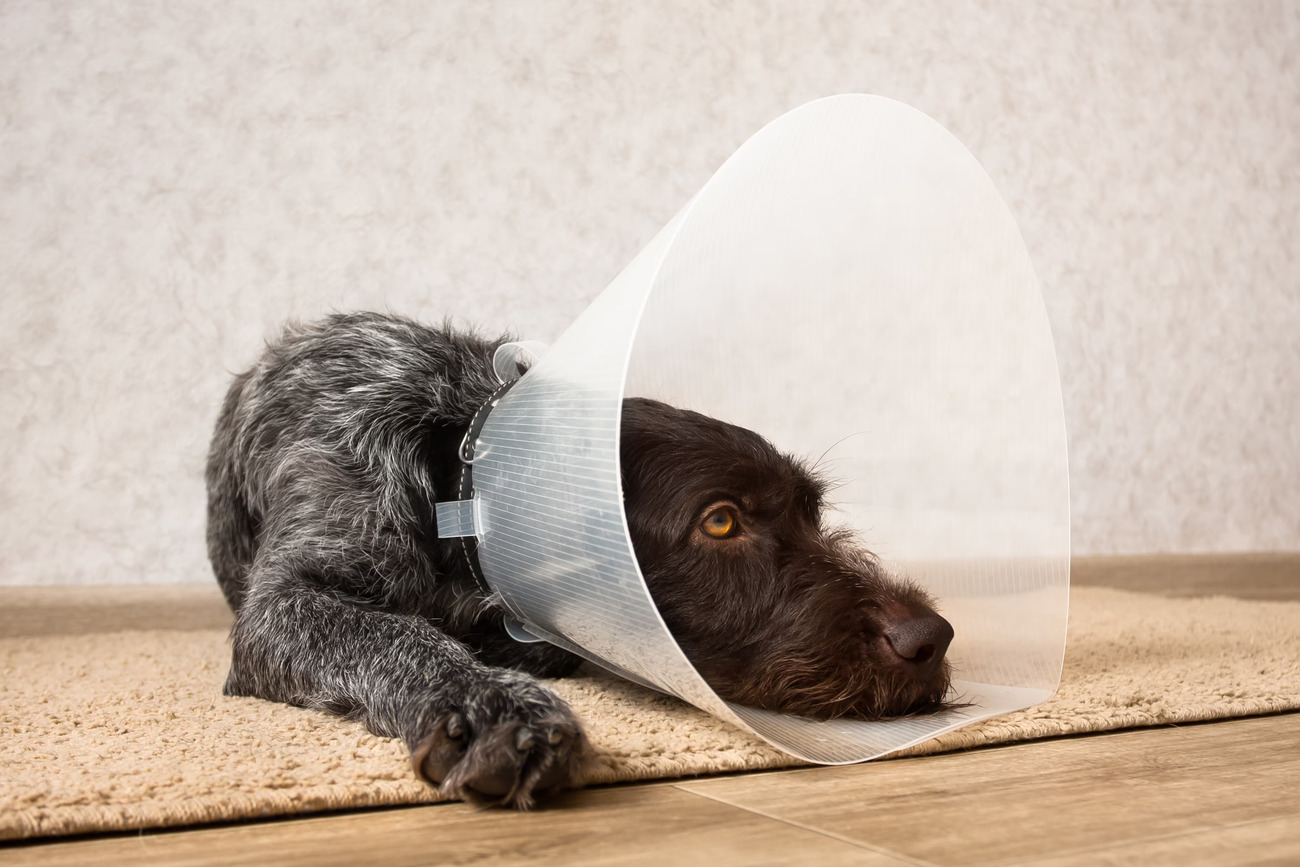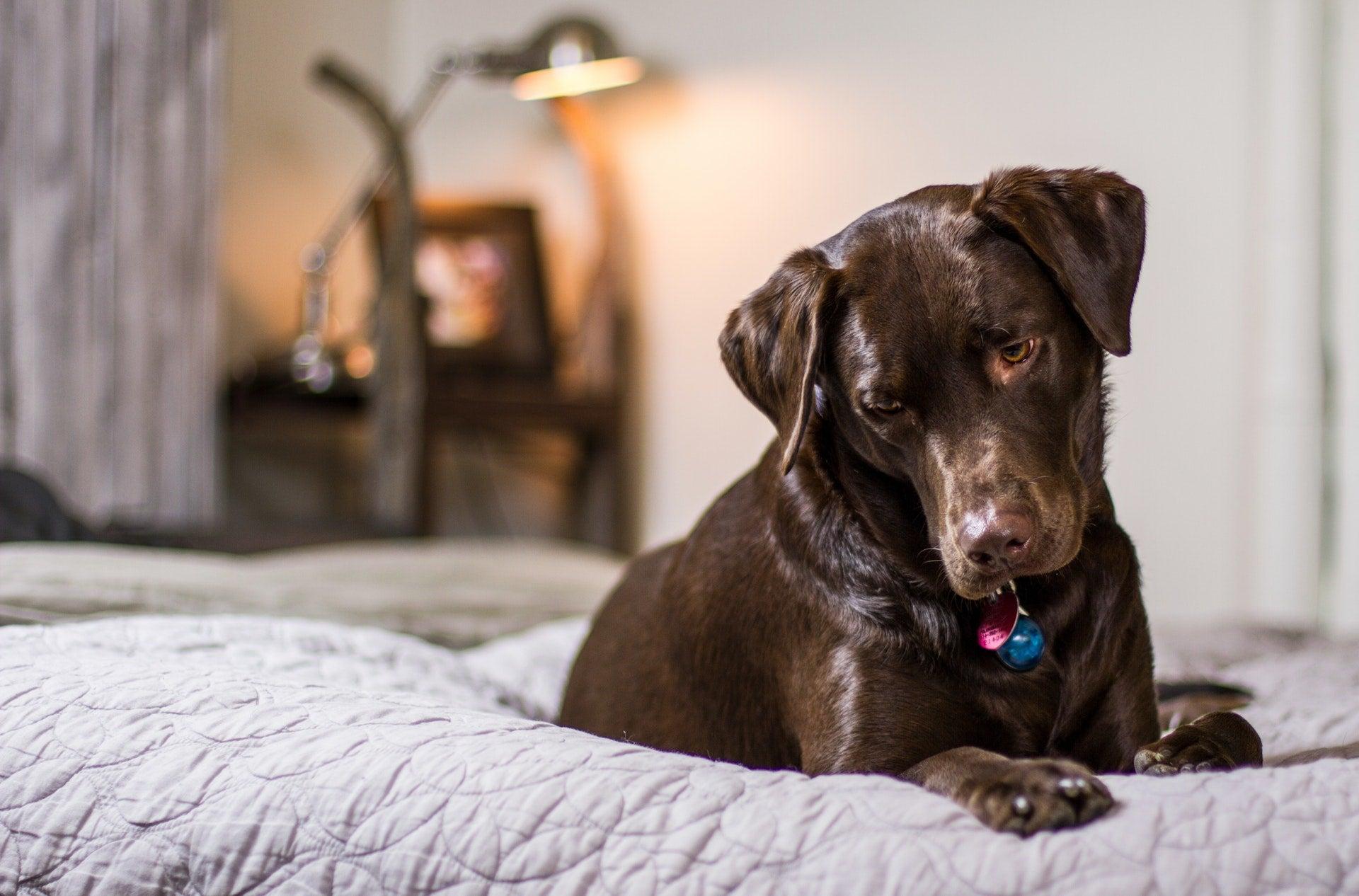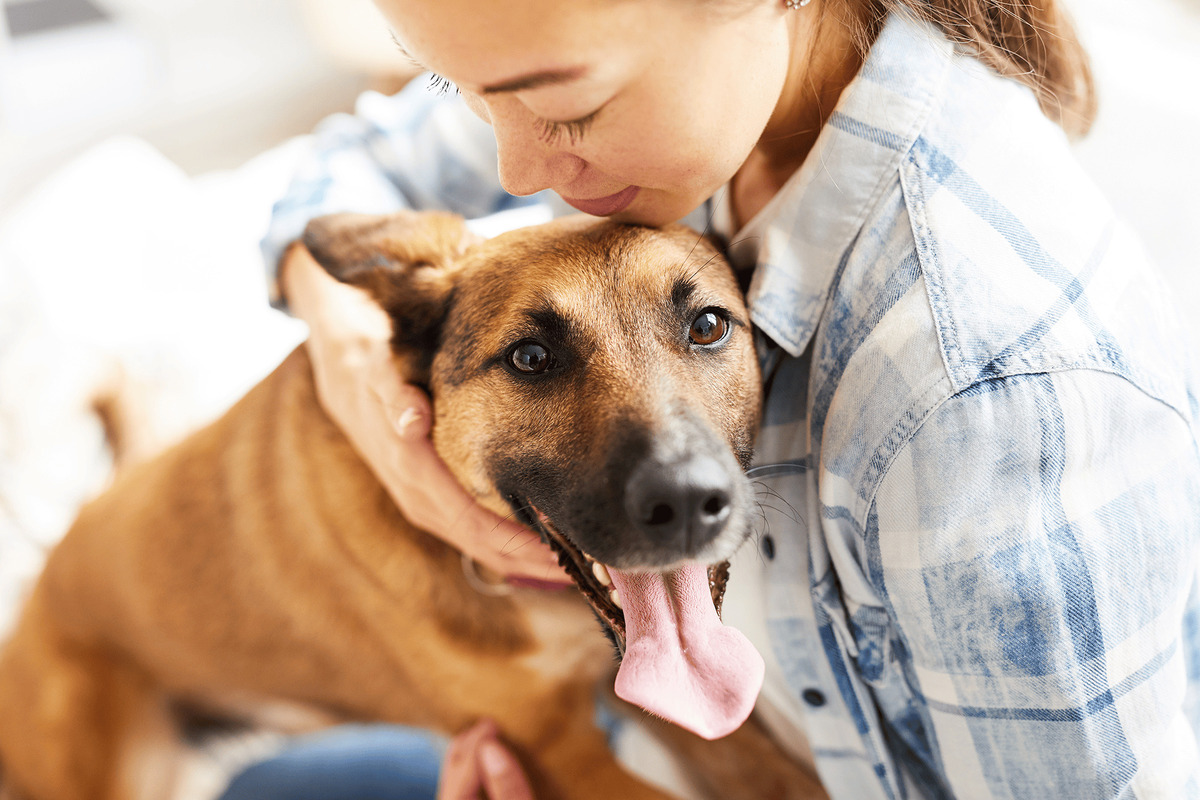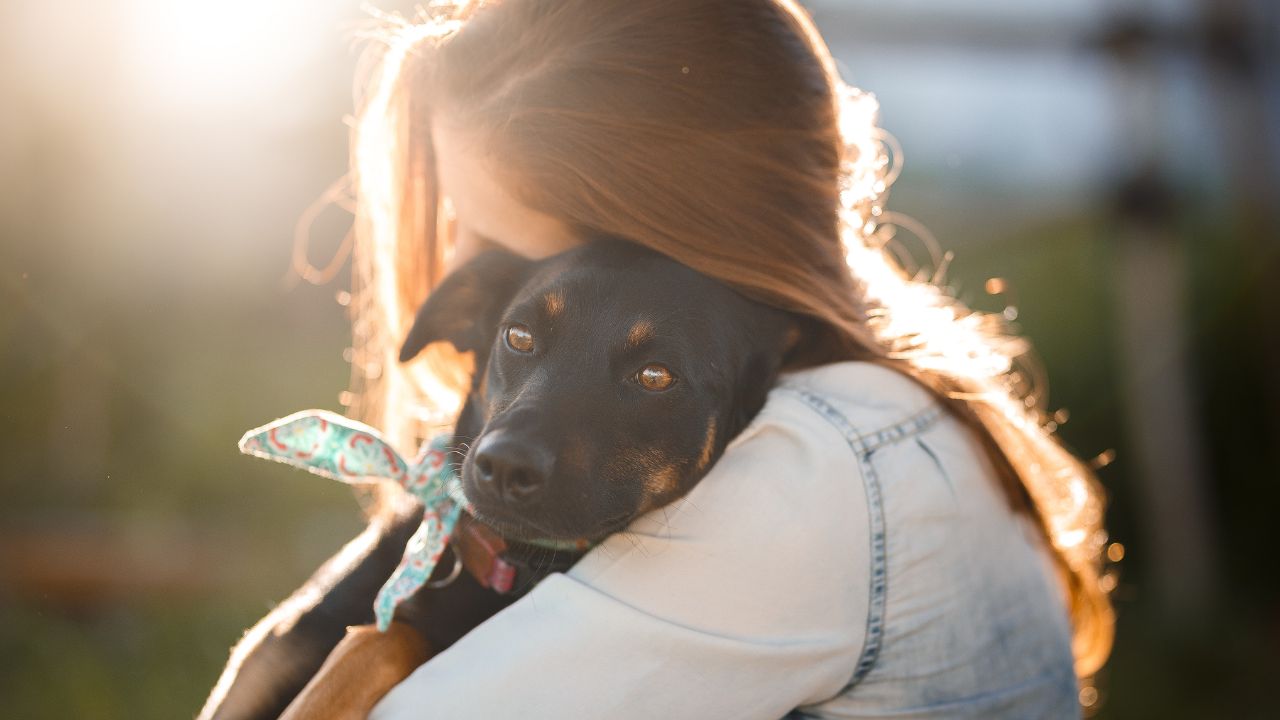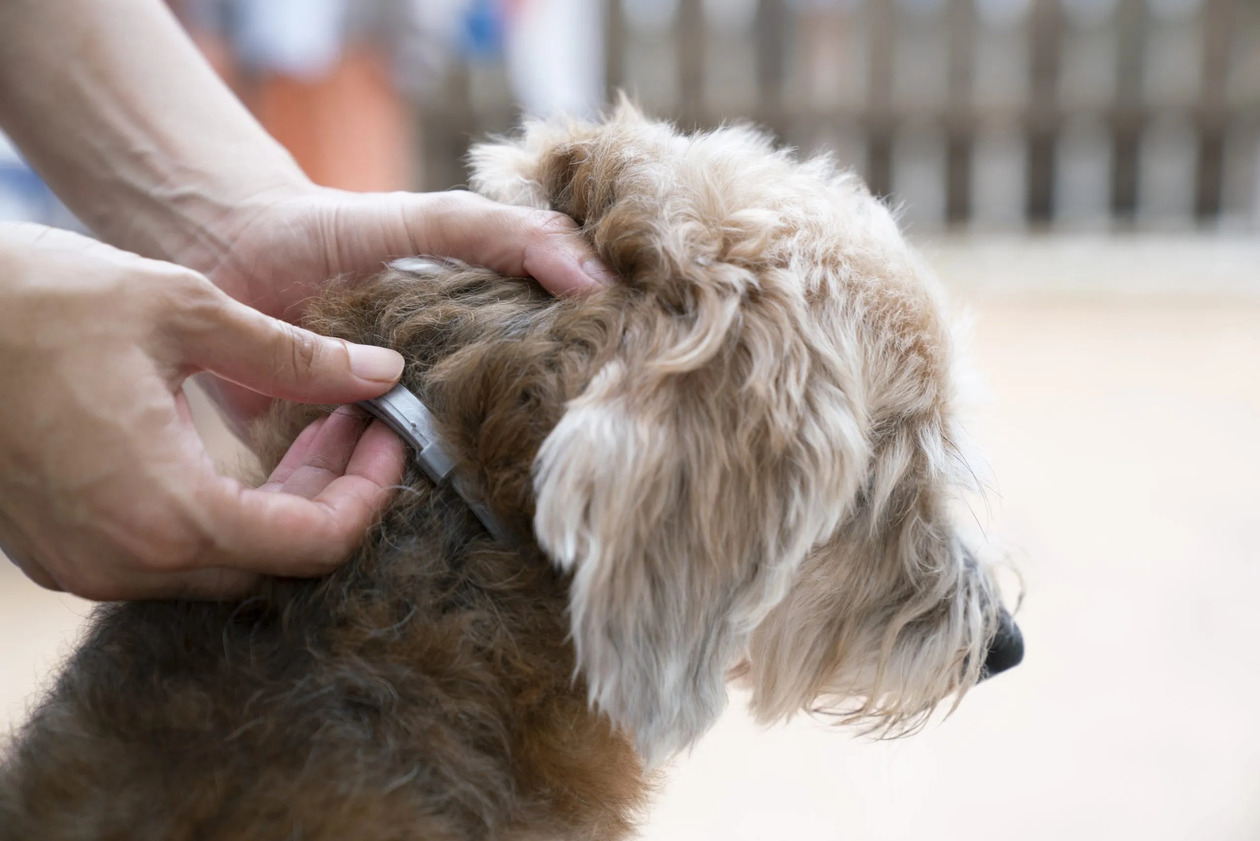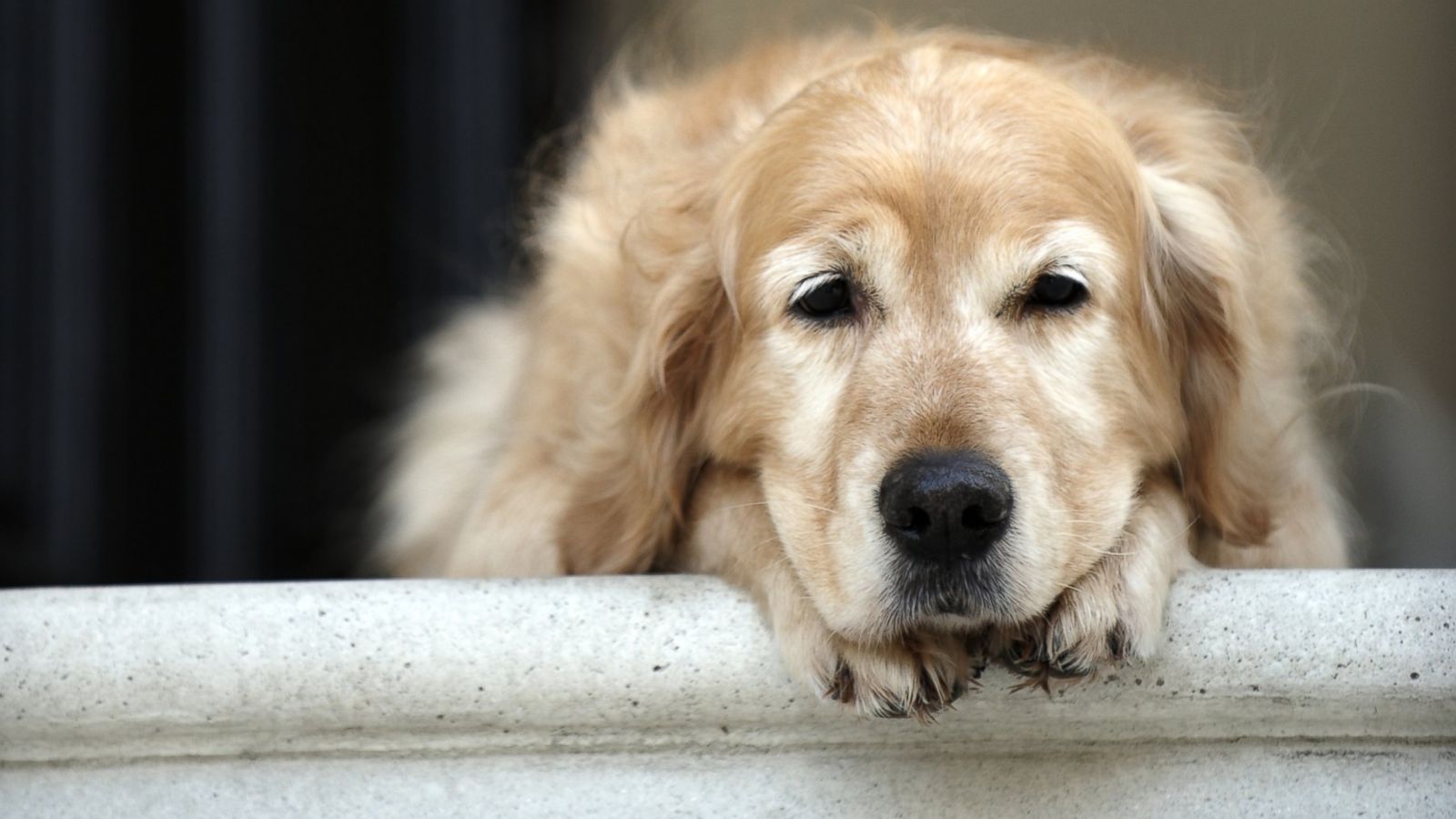Home>Health & Wellness>Common Health Issues>Eye and Ear Health>How Long Does Eye Surgery Recovery For Dogs Take
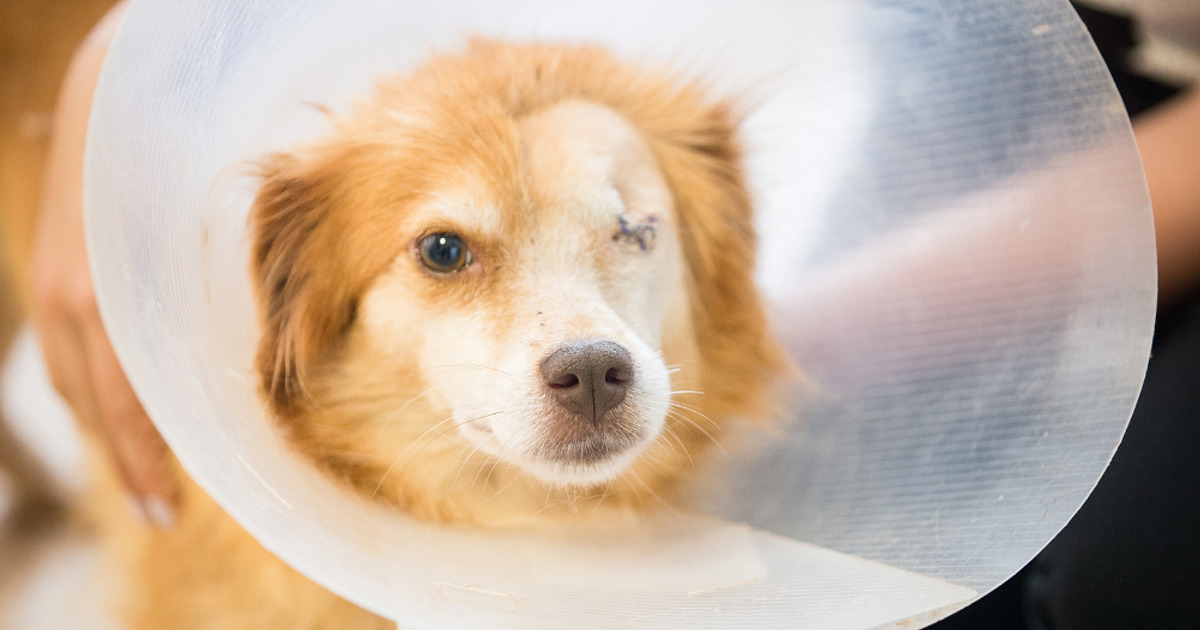

Eye and Ear Health
How Long Does Eye Surgery Recovery For Dogs Take
Modified: February 21, 2024
Learn about the recovery time for eye surgery in dogs and how to promote eye and ear health. Get expert tips and advice for a speedy recovery.
(Many of the links in this article redirect to a specific reviewed product. Your purchase of these products through affiliate links helps to generate commission for Pawsomeoldies.com, at no extra cost. Learn more)
Table of Contents
Introduction
Eye surgery for dogs is a significant medical procedure that can greatly improve the quality of life for our furry companions. Whether it's for treating cataracts, corneal ulcers, or other eye conditions, this type of surgery requires careful consideration and post-operative care to ensure a successful recovery. Understanding the nuances of eye surgery for dogs and the associated recovery process is crucial for pet owners who want to provide the best possible care for their beloved animals.
In this article, we will delve into the details of eye surgery recovery for dogs, shedding light on the factors that influence recovery time, the typical timeline for healing, and the essential post-surgery care and monitoring. By gaining insights into these aspects, pet owners can be better equipped to support their dogs through the recovery process and recognize any signs of complications that may arise.
Let's embark on a journey to explore the intricacies of eye surgery recovery for dogs, gaining a deeper understanding of the post-operative phase and the pivotal role that pet owners play in ensuring their furry friends' well-being.
Read more: Senior Dog Neutering Recovery: How Long
Understanding Eye Surgery for Dogs
Eye surgery for dogs encompasses a range of procedures aimed at addressing various ocular conditions that can affect our canine companions. From cataract removal to treatment for corneal ulcers, glaucoma, or eyelid abnormalities, these surgeries are performed to alleviate discomfort, restore vision, and enhance the overall ocular health of dogs.
One of the most common eye surgeries for dogs is cataract removal. Cataracts, characterized by the clouding of the lens within the eye, can significantly impair a dog's vision, ultimately impacting their quality of life. Through cataract surgery, the cloudy lens is removed and replaced with an artificial lens, effectively restoring clear vision for the dog.
Corneal ulcers, another prevalent issue in canine eye health, may necessitate surgical intervention. These ulcers, often caused by trauma or underlying eye conditions, can lead to pain, inflammation, and potential vision impairment. Surgical procedures such as corneal grafts or debridement may be employed to address these ulcers and promote healing.
Glaucoma, a condition characterized by increased pressure within the eye, can also prompt the need for surgical treatment in dogs. Surgical options for glaucoma may include procedures to alleviate intraocular pressure and preserve the dog's remaining vision.
Additionally, eyelid abnormalities, such as entropion or ectropion, may require surgical correction to prevent discomfort, irritation, and potential damage to the cornea.
Understanding the specific nature of the eye condition requiring surgery is crucial for pet owners, as it enables them to comprehend the purpose and potential outcomes of the surgical procedure. Moreover, being informed about the details of the surgery can empower pet owners to make well-informed decisions in collaboration with their veterinary ophthalmologist.
In essence, eye surgery for dogs encompasses a spectrum of procedures tailored to address diverse ocular conditions, with the overarching goal of improving the dog's visual acuity, alleviating discomfort, and preserving ocular health. By gaining a deeper understanding of the nature and purpose of these surgeries, pet owners can navigate the process with greater confidence and clarity, ultimately contributing to the well-being of their beloved canine companions.
Factors Affecting Recovery Time
The recovery time following eye surgery for dogs can vary significantly based on several key factors. Understanding these factors is essential for pet owners, as it provides insights into the potential duration of the post-operative healing process and aids in managing expectations while providing optimal care for their furry companions.
-
Type of Surgery: The specific type of eye surgery performed on the dog is a primary determinant of the recovery time. Complex procedures such as cataract removal or corneal grafts may entail a longer recovery period compared to less invasive surgeries. The extent of tissue manipulation and the intricacy of the surgical intervention can influence the duration of healing.
-
Underlying Health Conditions: Dogs with pre-existing health issues, such as diabetes or autoimmune disorders, may experience prolonged recovery times following eye surgery. These underlying conditions can impact the body's ability to heal and may necessitate additional post-operative care and monitoring.
-
Age and Overall Health: The age and general health status of the dog play a significant role in recovery. Younger, healthier dogs may exhibit faster healing and resilience, while older dogs or those with compromised immune systems may require a more extended recovery period.
-
Post-Operative Care: The level of post-operative care provided by pet owners directly influences the recovery time. Strict adherence to medication schedules, eye drops, and activity restrictions can promote optimal healing and potentially shorten the recovery duration.
-
Complications and Infections: The occurrence of post-operative complications or infections can prolong the recovery process. Vigilant monitoring for signs of complications, such as excessive swelling, discharge, or abnormal behavior, is crucial for promptly addressing any issues that may arise.
-
Veterinary Guidance and Follow-Up: The guidance and follow-up care provided by the veterinary ophthalmologist significantly impact the recovery trajectory. Clear instructions regarding post-operative care, scheduled follow-up appointments, and potential signs of concern empower pet owners to support their dog's recovery effectively.
By considering these factors, pet owners can gain a comprehensive understanding of the variables that influence recovery time following eye surgery for dogs. This knowledge enables them to approach the post-operative phase with informed awareness, proactive care, and a keen eye for any developments that may warrant attention. Ultimately, recognizing and addressing these factors can contribute to a smoother and more successful recovery journey for their canine companions.
Typical Recovery Timeline
The typical recovery timeline following eye surgery for dogs encompasses a series of progressive stages, each playing a crucial role in the dog's healing process. While individual variations may occur based on the specific surgical procedure and the dog's unique physiology, a general timeline can provide pet owners with valuable insights into what to expect during the post-operative period.
Immediate Post-Operative Phase (Days 1-3)
In the immediate aftermath of eye surgery, dogs are often in a subdued state as the effects of anesthesia wear off. During this phase, it is common for dogs to experience mild discomfort, and veterinary-prescribed pain management is essential to ensure their well-being. Eye drops or ointments may be administered to aid in healing and prevent infection. Additionally, activity restriction is typically recommended to minimize strain on the surgical site and promote initial recovery.
Early Healing and Adjustment (Days 4-7)
As the first week unfolds, dogs may exhibit gradual signs of improvement as the initial healing process takes place. Swelling and redness around the surgical site may begin to diminish, and the dog's overall demeanor may show signs of returning to normal. Close monitoring for any unusual symptoms or complications remains crucial during this phase, and adherence to medication schedules and follow-up appointments is paramount.
Continued Recovery and Monitoring (Weeks 2-4)
During the second to fourth week post-surgery, dogs often progress further along the path to recovery. The surgical site continues to heal, and any sutures or protective measures may be reassessed by the veterinary ophthalmologist. While the dog's comfort and well-being improve, it is essential to maintain vigilance for any signs of infection, abnormal discharge, or behavioral changes. Gradual reintroduction of regular activities may be recommended based on the dog's individual response to the surgery.
Long-Term Healing and Ocular Health (Months 1-3)
In the months following eye surgery, dogs typically experience a more stabilized phase of healing, with the surgical site fully closed and the ocular tissues continuing to adapt. Regular follow-up appointments with the veterinary ophthalmologist may be scheduled to assess the long-term outcomes of the surgery and monitor the dog's ocular health. During this period, pet owners play a pivotal role in maintaining the dog's overall well-being, including adhering to any ongoing medication regimens and promptly addressing any concerns related to the surgical site or ocular health.
By understanding the typical recovery timeline following eye surgery for dogs, pet owners can approach the post-operative phase with informed awareness and proactive care. This knowledge empowers them to provide the necessary support for their canine companions as they navigate the journey toward restored ocular health and overall well-being.
Post-Surgery Care and Monitoring
Following eye surgery for dogs, diligent post-operative care and vigilant monitoring are paramount to facilitate optimal healing and minimize the risk of complications. Pet owners play a pivotal role in providing the necessary support and adherence to post-surgery guidelines, working in tandem with the veterinary ophthalmologist to ensure the dog's well-being during the recovery phase.
Medication Adherence
Strict adherence to prescribed medications, including oral medications, eye drops, or ointments, is essential to manage pain, prevent infection, and promote healing. Pet owners should meticulously follow the medication schedule outlined by the veterinary ophthalmologist, ensuring that the dog receives the appropriate dosage at the specified intervals. Consistent medication adherence significantly contributes to the dog's comfort and aids in the healing process.
Activity Restriction
During the initial phase of recovery, activity restriction is often recommended to prevent undue strain on the surgical site and facilitate healing. Pet owners should create a calm and controlled environment for the dog, minimizing vigorous physical activities and ensuring that the dog avoids rubbing or scratching the affected eye. Restricting activities helps mitigate the risk of complications and supports the dog's recuperation.
Environmental Considerations
Creating a conducive environment for the dog's recovery is crucial. This includes maintaining a clean living space to minimize the risk of infection, avoiding exposure to potential irritants or contaminants, and ensuring that the dog's surroundings are comfortable and free from hazards that could compromise the healing process. Additionally, providing a quiet and stress-free environment can contribute to the dog's overall well-being during recovery.
Follow-Up Appointments
Scheduled follow-up appointments with the veterinary ophthalmologist are integral to monitor the dog's progress, assess the surgical site, and address any emerging concerns. Pet owners should diligently attend these appointments, allowing the veterinary ophthalmologist to evaluate the dog's ocular health, make any necessary adjustments to the post-operative care plan, and provide guidance on the next steps in the recovery journey.
Observational Monitoring
Close observation of the dog's behavior, demeanor, and the surgical site is essential. Pet owners should monitor for any signs of discomfort, abnormal discharge, excessive swelling, or changes in the dog's vision. Promptly reporting any concerning developments to the veterinary ophthalmologist enables timely intervention and ensures that potential issues are addressed expediently.
By prioritizing post-surgery care and maintaining a proactive approach to monitoring the dog's recovery, pet owners can significantly contribute to the success of the surgical intervention and the dog's overall well-being. The collaborative efforts of pet owners and veterinary professionals are instrumental in navigating the post-operative phase with attentiveness, compassion, and a steadfast commitment to the dog's ocular health.
Signs of Complications
Recognizing potential signs of complications following eye surgery for dogs is crucial for ensuring timely intervention and mitigating any adverse outcomes. While the majority of dogs undergo a smooth recovery process, being vigilant for indicators of complications empowers pet owners to promptly seek veterinary attention and support their canine companions through any challenges that may arise.
-
Excessive Swelling: Unusual or pronounced swelling around the surgical site, accompanied by redness or warmth, can indicate inflammation or potential infection. Swelling that does not subside or intensifies over time warrants immediate veterinary assessment.
-
Abnormal Discharge: Any discharge from the operated eye that appears excessive, discolored, or malodorous may signify an underlying issue such as infection or inadequate healing. Observing the consistency and quantity of discharge is essential in identifying potential complications.
-
Persistent Discomfort: Dogs experiencing prolonged discomfort, manifested through excessive blinking, pawing at the affected eye, or reluctance to open the eye, may be indicative of unresolved pain or discomfort. Persistent signs of distress warrant veterinary evaluation to address the underlying cause.
-
Changes in Vision: Observable changes in the dog's vision, such as increased cloudiness, blurriness, or apparent visual impairment, necessitate immediate attention. These changes may indicate complications related to the surgical outcome or underlying ocular issues that require assessment.
-
Unusual Behavior: Any deviations from the dog's typical behavior, including increased agitation, lethargy, or unusual vocalizations, may signal distress or discomfort. Monitoring the dog's behavior and promptly addressing any atypical manifestations is essential for identifying potential complications.
-
Delayed Healing: If the surgical site exhibits delayed or impaired healing, characterized by persistent open wounds, delayed closure, or lack of improvement over time, it may indicate complications such as poor tissue healing or infection. Monitoring the progression of healing is crucial for early detection of potential issues.
-
Recurrent Irritation: Dogs displaying recurrent signs of ocular irritation, such as excessive tearing, squinting, or sensitivity to light, may indicate unresolved issues related to the surgical intervention. Persistent signs of ocular discomfort warrant veterinary assessment to address the underlying cause.
By remaining attentive to these potential signs of complications, pet owners can play a proactive role in safeguarding their dog's ocular health during the post-operative phase. Prompt communication with the veterinary ophthalmologist upon observing any concerning signs enables timely evaluation and intervention, ultimately contributing to the successful resolution of any complications that may arise.
The collaborative efforts of pet owners and veterinary professionals in recognizing and addressing potential complications are instrumental in ensuring the well-being and optimal recovery of dogs following eye surgery. Through attentive monitoring and proactive communication, pet owners can navigate the post-operative phase with diligence and a steadfast commitment to their canine companions' ocular health.
Conclusion
In conclusion, the journey of eye surgery recovery for dogs encompasses a multifaceted process that demands careful consideration, proactive care, and vigilant monitoring. Understanding the nuances of the specific surgical procedure, the factors influencing recovery time, and the essential post-operative care guidelines empowers pet owners to provide the best possible support for their canine companions.
Throughout the recovery timeline, from the immediate post-operative phase to the long-term healing and ocular health assessment, pet owners play a pivotal role in facilitating their dog's comfort, well-being, and successful recovery. By adhering to medication schedules, implementing activity restrictions, and maintaining a keen eye for any signs of complications, pet owners contribute significantly to the overall outcome of the surgical intervention.
The collaborative partnership between pet owners and veterinary ophthalmologists is instrumental in navigating the post-operative phase with attentiveness, compassion, and a steadfast commitment to the dog's ocular health. Scheduled follow-up appointments, clear communication, and proactive monitoring serve as pillars of support, ensuring that any emerging concerns are promptly addressed and the dog's recovery trajectory remains on a positive course.
Ultimately, the successful recovery from eye surgery for dogs is a testament to the dedication and care provided by pet owners, complemented by the expertise and guidance of veterinary professionals. By embracing the journey of eye surgery recovery with informed awareness, proactive engagement, and unwavering compassion, pet owners can champion their canine companions' well-being and contribute to the restoration of their ocular health and overall quality of life.
As we navigate the complexities of eye surgery recovery for dogs, let us continue to prioritize the well-being of our furry companions, recognizing that our steadfast commitment and proactive care are integral in shaping their journey toward restored ocular health and a vibrant, fulfilling life.
